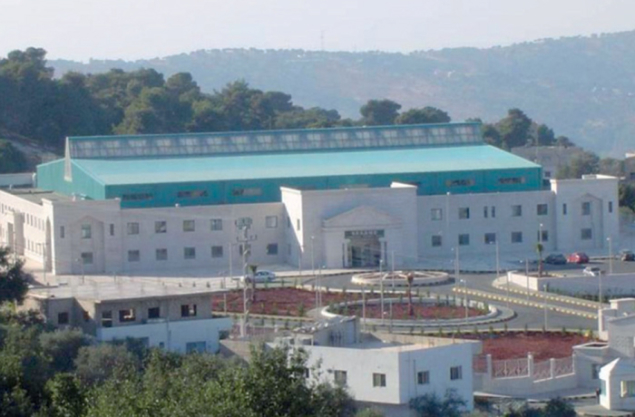CERN was conceived in the late 1940s and early 1950s, when two ambitions came together – to enable construction of scientific facilities that were beyond the means of individual countries, and to foster collaboration between peoples who had recently been at war. The network of CERN users, which already included scientists from Eastern Europe and the USSR during the Cold War, expanded in the LEP era. Today, scientists from 74 countries around the world work together on LHC experiments, producing good science and also gaining a better appreciation of each other’s cultures and values.
Following in CERN’s footsteps, many other pan-European scientific organizations have been established. However, the organization most closely modelled on CERN is perhaps SESAME, which shares CERN’s original aims and its governance structure. SESAME (Synchrotron-light for Experimental Science and Applications in the Middle East) is a third-generation light source under construction in Jordan, which will enable research in subjects ranging from biology and medical sciences through materials science, physics and chemistry to archaeology (much focussed on regional issues, e.g. related to the environment, health and agriculture). SESAME will foster collaboration between its very diverse members (currently Bahrain, Cyprus, Egypt, Iran, Israel, Jordan, Pakistan, the Palestinian Authority and Turkey), some of which are in conflict.
Following a suggestion by Gus Voss (DESY) and Herman Winick (SLAC), Sergio Fubini (CERN and University of Turin, who chaired a Middle East Scientific Co-operation group) and Herwig Schopper (director-general of CERN in the years 1981–1987) persuaded the German government to donate the components of the then soon-to-be-dismantled Berlin synchrotron BESSY I for use at SESAME. At a meeting at UNESCO in 1999, an interim council was established with Schopper as president, and a Jordanian (Khaled Toukan, who has served as director since 2005) and a Turk (Dincer Ülkü) as co-vice-presidents. Many others, e.g. Eliezer Rabinovici (Hebrew University), played important roles in SESAME’s history – see http://mag.digitalpc.co.uk/fvx/iop/esrf/sesamebrochure/.
Progress was initially slow due to lack of funding, but has accelerated since the SESAME building came into use in 2008. The (upgraded) BESSY I microtron injector is producing a 22 MeV beam, which has been successfully stored in the (refurbished) booster synchrotron. In 2002 it was decided to build a completely new 2.5 GeV main ring, which will be installed in 2015. Four “day-one” beamlines are being constructed, and SESAME is on track technically for commissioning to begin in early 2016.
The scientific programme has been developed in user meetings that bring together scientists in the region. Regional interest and scientific capacity have been fostered by an extensive training programme, involving schools, workshops and work at operating light sources and other laboratories, which has been supported generously by international agencies (particularly the IAEA), national agencies, professional scientific societies, the world’s synchrotron laboratories, and small charitable foundations.
SESAME was created bottom-up by scientists, who in some cases dragged their governments outside their comfort zones.
SESAME’s major problem is obtaining funding. The members became involved before it was agreed to build a new main ring with no obligation to contribute to the capital cost, which would be beyond the means of the many who have limited science budgets and find it very hard to pay their rapidly increasing contributions to operational costs. The richer countries in the region are currently unwilling to join for political reasons. However, Iran, Israel, Jordan and Turkey have each agreed to make voluntary contributions of $5 million, the EU has contributed €7.5 million (including €5 million for construction of the magnets of the main ring which, very helpfully, is being managed by CERN), Italy has pledged €2 million with more possibly to come, and many of the observers (Brazil, China, France, Germany, Greece, Italy, Japan, Kuwait, Portugal, the Russian Federation, Spain, Sweden, Switzerland, the UK and the USA) have donated equipment that was surplus to requirements and support the training programme.
SESAME and CERN exemplify the “Science for Peace” mission of UNESCO, which served as a midwife for both, by fostering better understanding between scientists and engineers, building on the respect they develop for each other’s professional abilities. There are of course political hurdles to be jumped (visa restrictions prevent many of the members hosting SESAME meetings; sanctions are holding up payments by Iran; frequent changes of government have so far prevented Egypt joining the other voluntary donor members; etc). However, provided SESAME is a first-class scientific instrument, leading scientists from across the region will wish to work there and the political mission will look after itself.
SESAME needs funding for a hostel and a small conference centre, which could also be used for international meetings on issues such as water resources, agriculture or the environment. I dream that, as other European organizations followed CERN, this will give birth to other international organizations in the Middle East.
SESAME was created bottom-up by scientists, who in some cases dragged their governments outside their comfort zones, but it now needs external top-down help and encouragement to ensure timely completion. I hope that this article will inspire other countries (without geographical limitations) to join SESAME, and further contributions from governments in other regions, charitable foundations and philanthropists.






